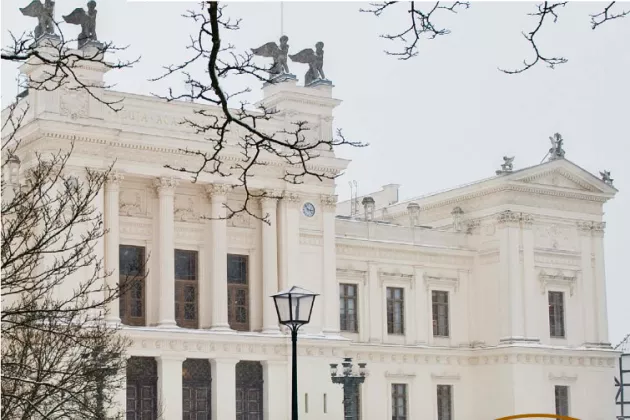The annual report shows that good economic growth has continued for Lund University with revenues of SEK 9,921 million, compared to SEK 9,466 million in 2021.
The number of employees also rose, in December 2022 there was a total of 8,640 staff members, corresponding to 7,485 full-time equivalents (FTEs). Compared to December 2021, this was an increase of 167 people and 105 HTEs. In terms of staff categories, this was made up of 32 per cent teaching staff, 34 per cent other teaching and research staff and 35 per cent technical and administrative staff. This distribution has been relatively stable over time.
Education
The number of FTE students in 2022 was 28,922, which was a decrease of 169 from 2021. The number of applying and registered students fell compared to 2021 but increased across all forms of education compared to 2020. The percentage of women was 56.8 per cent, an increase of 0.3 per from the previous year.
Among the different forms of education, it is the international Master’s programmes that stand out, as Lund University continued to have the most applicants among Sweden’s HEIs. The group comprising fee-paying students accounted for a large part of the increase. In total, fee-paying applicants for both programmes and courses has risen by 40 per cent over the last five years. The number of fee-paying FTE students (from non-EU countries) continued to increase, from 1,129 in 2021 to 1,151 in 2022.
The annual report shows that the University has fulfilled its goal of recruiting at least 49 per cent female professors. Of the year’s newly recruited professors, 51 per cent were women. The total number of newly recruited professors with an official start date in 2022 was 65.
In recent years, several special education initiatives have been implemented that have required rapid and recourse-intensive transitions. The University has therefore initiated an experimental testbed, EduLab, where teaching staff can obtain assistance in developing new courses that fulfil such requirements. The focus is on lifelong learning and interdisciplinary courses and study programmes. Another element in this work on developing the range of courses and programmes is the newly established Unit for Educational Services, which was formed to meet a more permanent need for online learning environments.
The European University Alliance for Global Health (EUGLOH) continues to develop its collaboration through joint education initiatives and increased exchanges, virtual and physical, for students and staff. In July, the Alliance was renewed for four years, as of 1 January 2023, with nine European universities continuing in the collaboration.
Research
During the year, five profile areas were defined, spanning several subjects and involving all the faculties. They are to represent the University’s research profile.
Of the University’s revenues, 69% refers to research and third-cycle education, with research accounting for SEK 6,880 million. Just over half of this is derived from external grants. The largest funding bodies are the Swedish Research Council, the EU and the Knut and Alice Wallenberg Foundation. The percentage of internationally co-authored articles has continued to rise.
Download the Annual report 2022 (In Swedish).


